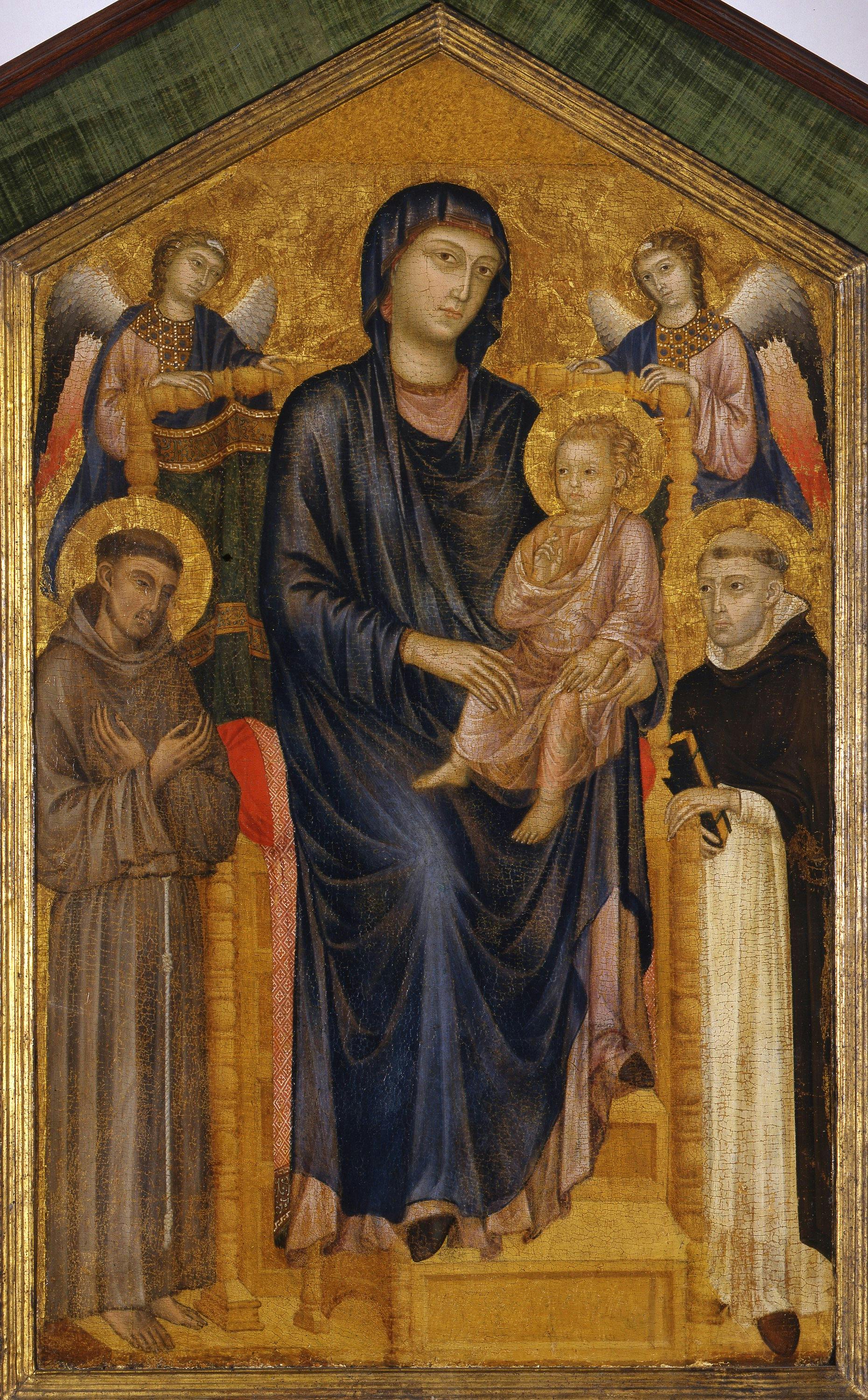Madonna Enthroned with the Child, St. Francis, St. Dominic, and two Angels
Attributed to Cimabue (Florence, documented between 1272 and 1302)
The Enthroned Madonna with Baby Jesus on her lap is flanked by two highly venerated saints, Francis of Assisi (1181c. - 1226) and Dominic de Guzmán (1170-1221), founders of the religious orders that bear their names. Both saints wear robes typically associated with the two orders. Saint Francis, whose hands and feet are marked by stigmata, wears a brown habit, while Saint Dominic wears a white tunic under a black cloak. Christ Child is dressed like an eminent man of antiquity and gives a blessing as he looks at Saint Francis, who humbly lowers his gaze while crossing his hands over his chest, a gesture indicating his submission to the divine will. The Assisian saint takes the place of honour to the right of Mary and Jesus.
The throne is depicted using oblique projection. This technique was used by painters in the second half of the thirteenth century to depict three-dimensionality and to create depth. The material concreteness of the throne is emphasised by the two angels resting their hands on its back.
The painting is attributed to Cimabue, a painter also mentioned in Dante’s Divine Comedy. Cimabue helped guide painting towards naturalism, paving the way for his pupil, Giotto. However, there is no consensus on this attribution – which is also hindered by the painting’s poor state of conservation. The work could therefore be attributed to one of Cimabue’s collaborators or followers, perhaps the painter of the frescoes of St. Michael in the Velluti Chapel in the Basilica of Santa Croce in Florence.
Before appearing in the Contini Bonacossi collection, the painting belonged to Edward Hutton’s collection in London. Hutton was an English writer and lover of Italy, where he lived for a long time.
Virgin and Child Enthroned, and Prophets (Santa Trinita Maestà)
Cimabue (Firenze, documentato tra 1272 e 1302)
